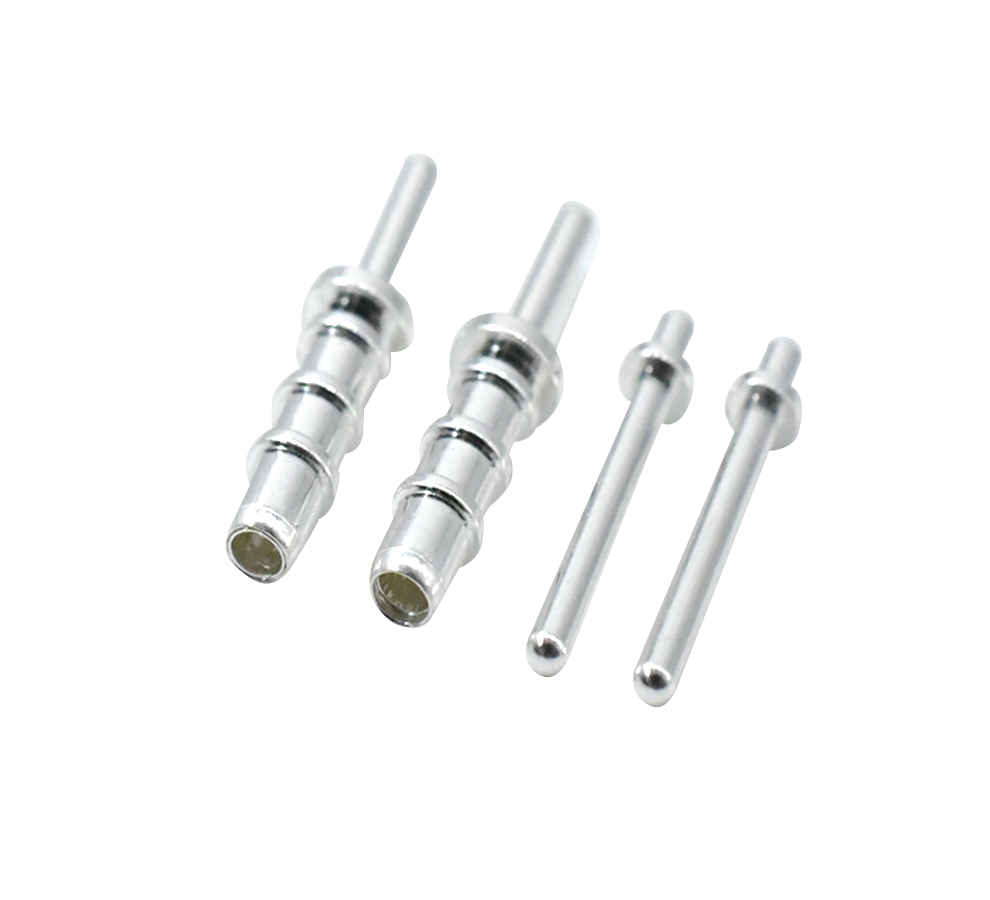Pogopin Quality Management
Quality management of pogopin is of utmost importance to ensure that the connectors meet the high - performance requirements of various electronic devices.
1. Incoming Material Inspection
The quality management process begins with the inspection of incoming materials. As mentioned earlier, the materials used in pogopin production, such as the pin, spring, and barrel materials, are carefully inspected upon arrival at the factory. The inspection includes verifying the material specifications, such as chemical composition, mechanical properties, and dimensional accuracy. For example, the electrical conductivity of the pin material is tested to ensure it meets the required standards. Any non - conforming materials are rejected to prevent potential quality issues in the final product.

2. Process Control
During the production process, strict process control measures are implemented. Each machining operation, assembly step, and surface treatment process is closely monitored. For machining operations, parameters such as cutting speed, feed rate, and tool wear are continuously monitored and adjusted as needed to ensure the precision of the components. In the assembly process, operators are trained to follow standardized procedures to ensure consistent assembly quality. The temperature, time, and concentration of the plating solution in the surface treatment process are precisely controlled to achieve the desired coating quality. Regular in - process inspections are carried out to detect and correct any quality deviations in a timely manner.
3. Quality Inspection and Testing
Visual Inspection: As a basic inspection method, visual inspection is carried out at multiple stages of production. Operators visually inspect the pogopin for any visible defects, such as scratches, dents, improper plating, or misaligned components. This inspection can quickly identify obvious quality issues and prevent defective products from proceeding to the next production stage.
Dimensional Inspection: Using precision measuring instruments, dimensional inspection is performed to ensure that the pogopin meets the specified dimensions. The diameter, length, and inner and outer diameters of the barrel, as well as the dimensions of the pin and spring, are carefully measured. Any deviation from the design specifications may affect the performance of the pogopin, so strict dimensional control is essential.
Electrical Testing: Electrical tests are crucial for pogopin quality management. Contact resistance, insulation resistance, and electrical conductivity are measured using specialized test equipment. The contact resistance should be as low as possible to ensure efficient power and signal transmission, while the insulation resistance should be high to prevent electrical leakage. These tests are carried out under different conditions, such as normal temperature, high temperature, and low temperature, to simulate real - world usage scenarios.
Mechanical Testing: Mechanical tests are conducted to evaluate the mechanical properties and durability of the pogopin. Spring force testing measures the elastic force of the spring to ensure it provides the appropriate contact pressure. Fatigue testing, which involves simulating repeated mating and unmating cycles, is used to assess the long - term reliability of the pogopin. By subjecting the pogopin to a large number of cycles, manufacturers can determine its lifespan and ensure that it can withstand the rigors of normal use.
4. Corrective and Preventive Actions
If any quality issues are detected during the inspection and testing processes, immediate corrective actions are taken. This may involve reworking the defective products, adjusting the production process parameters, or replacing faulty equipment or materials. In addition, preventive actions are implemented to avoid similar quality issues in the future. Root - cause analysis is carried out to identify the underlying causes of the problems, and appropriate measures are taken to prevent their recurrence. Quality management systems, such as ISO 9001, are often implemented in pogopin manufacturing factories to ensure a systematic and continuous improvement approach to quality management.
Read recommendations:
Fairleigh national standard male needle